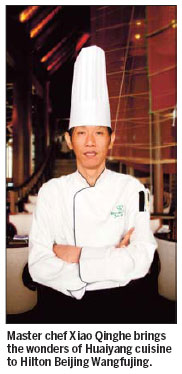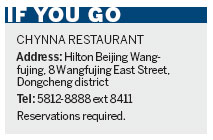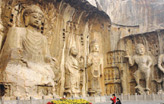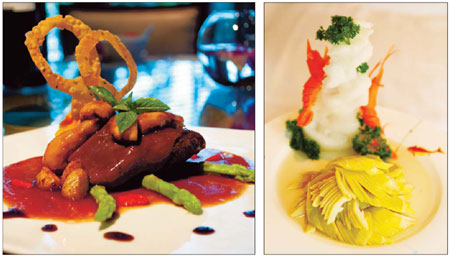Delicacies
Where fish make the dish
Updated: 2011-03-23 07:41
By Li Jing (China Daily)
|
From left: Steamed lamb with Japanese mushrooms; Poached spring bamboo with Chinese liquor. Photos Provided to China Daily |
 |
Abundant seafood and mentions in the classic novel A Dream of the Red Mansions largely characterize the cuisine of the Yangtze River's southern reaches, Li Jing discovers.
Fewer people are familiar with Huaiyang cuisine than know of its signature staple, Yangzhou Chaofan.
The rice dish sprinkled with pork, shrimp, egg and vegetables is found at street stalls throughout the country and in the Chinese eateries of the world.
It also appears on the Chynna Chinese restaurant's new Huaiyang cuisine menu, specially designed by guest chef Xiao Qinghe.
Xiao is the executive chef of the Hilton's Double Tree and has specialized in Huaiyang fare since 1987.
The cuisine is one of the major pillars of Chinese food.
It intermingles the styles of various localities that constellate the Yangtze River's lower reaches in Jiangsu province - Yangzhou, Nanjing, Suzhou and Zhenjiang.
The culinary variety's origins hail back to the Tang Dynasty (AD 618-907), when salt merchants prospered in the area. Its popularity peaked during the Qing Dynasty (1644-1911), when Emperor Qianlong came to the region.
Huaiyang is a land of fish and rice, so a rich slice of the sea creature taxonomy characterizes its cuisine. Ancient salt merchants would pack their water vessels with seafood, in part to maintain ballast, after unloading salt cargos.
Consequently, local offerings include such delights as Suzhou-style smoked fish and stir-fried river shrimp.
"We use shrimp from Yangzhou's Gaoyou area," Xiao said.
"So a reservation made three days in advance is required to ensure their freshness."
The restaurant also proffers "pan-fried dry scallops with minced shrimp" and "braised fish lips in superior soup" - a speciality of which shark is the main ingredient.
"The braised fish lips in superior soup is a surprising dish," Ruo Fei, lifestyle editor of a local magazine, said.
 |
"Looking at the dish, I can only guess how big the fish must be."
In addition to seafood, Huaiyang fare is also characterized by a plethora of dishes recorded in the classic novel A Dream of the Red Mansions, such as steamed chicken with locally made rice liquor.
"The prominent author Cao Xueqin lived in the area for about six decades, so he wrote about a variety of local dishes," Xiao said.
Many ingredients are seasonal.
These include carefully selected tealeaves, bamboo shoots, mushrooms, pears and dates.
An outstanding sample of this is braised spring bamboo shoots with shrimp roe, which is made exceptional by the tender crispness of the baby bamboo.
And no sampling of Huaiyang cuisine is complete without a taste of steamed pork balls with crab roe.
This is a staple of national banquets and is said to have been Emperor Qianlong's favorite.
Specials

Tea-ing up
More turning to Chinese tea for investment opportunities like vintage wine

A cut above
The ancient city of Luoyang is home to a treasure trove of cultural wonders.

Rise and shine
The Chinese solar energy industry is heating up following recent setbacks in the nuclear sector
